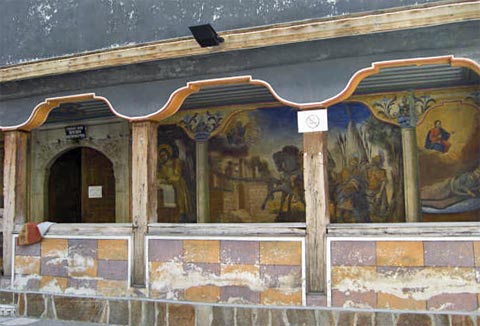.jpg)
Plovdiv is the second-largest city in Bulgaria after Sofia with a population of 338,153 inhabitants according to Census 2011. Plovdiv's history spans some 8,000 years, with traces of a Neolithic settlement dating to roughly 6000 BC; it is one of the oldest cities in the world. Some sources include Plovdiv among Europe’s oldest continuously inhabited cities. It is the administrative center of Plovdiv Province in southern Bulgaria and three municipalities (Plovdiv-city, Maritsa and Rodopi) and Bulgaria's Yuzhen tsentralen planning region (NUTS II), as well as the largest and most important city in Northern Thrace and the wider international historical region of Thrace. The city is an important economic, transport, cultural and educational center. The oldest American educational institution outside the United States was founded in Plovdiv in 1860, it was later moved to Sofia – today’s American College of Sofia.
Known in the West for most of its history by the Greek name Philippopolis, it was originally a Thracian settlement before becoming a major Roman city. In the Middle Ages, it retained its strategic regional importance, changing hands between the Byzantine and Bulgarian Empires. It came under Ottoman rule in the 14th century. In 1878, Plovdiv was made the capital of the autonomous Ottoman region of Eastern Rumelia; in 1885, it became part of Bulgaria with the unification of that region and the Principality of Bulgaria.
Plovdiv is situated in the southern part of the Plovdiv Plain on the two banks of the Maritsa River. The city has historically developed on seven syenite hills, some of which are 250 m (820.21 ft) high. Because of these seven hills, Plovdiv is often referred to in Bulgaria as "The City of the Seven Hills".
Plovdiv is host to economic and cultural events such as the International Fair Plovdiv, the international theatrical festival "A stage on a crossroad", the TV festival "The golden chest". There are many remains preserved from Antiquity such as the Ancient amphitheatre, Roman odeon, Roman Stadium, the archaeological complex Eirene and others.
Plovdiv was given various names throughout its long history. It was originally a Thracian settlement by the name of Eumolpias, named after the mythical Thracian king Eumolpos, son of Poseidon.Philip II of Macedon conquered the area in 342-341 BC and renamed the city Philippoupolis of which the later Thracian name for the city, Pulpudeva, is a translation. After the Romans took control of the area, the city was named Latin: Trimontium, meaning the Three Hills. During the Middle Ages the city was known as Philippoupolis in Byzantine Greek and Paldin (Пълдин) or Plavdiv (Плъвдив) in Old Bulgarian, variations of the town's earlier Thracian name. The city was known as Philippopolis in Western Europe well into the early 20th century. The city was known as Filibe in Turkish during the Ottoman Empire.
The asteroid (minor planet) 3860 Plovdiv is named after the city. It was discovered by the Bulgarian astronomer Violeta G. Ivanova on 8 August 1986. Plovdiv Peak (1,040 m/3,412 ft) on Livingston Island in the South Shetland Islands, Antarctica is also named after Plovdiv.

















0 comments:
Post a Comment